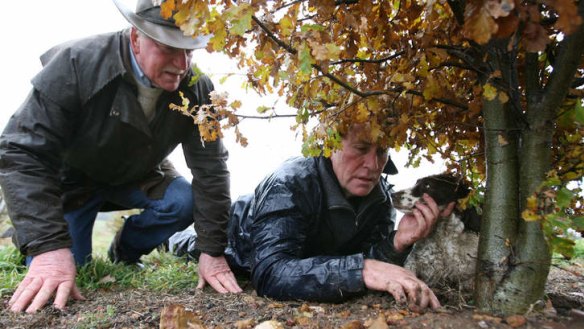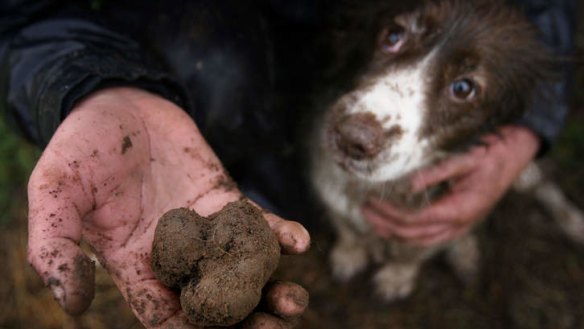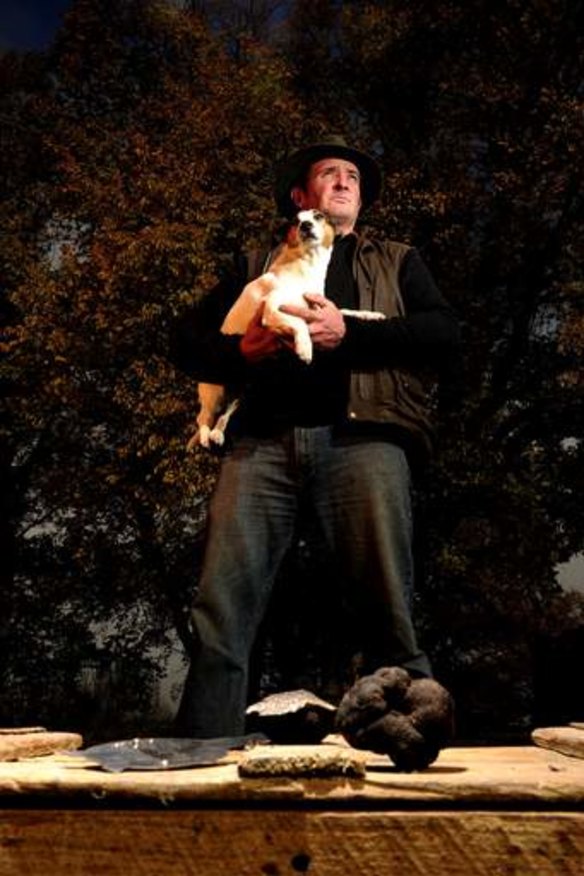Tricky treat
Growing truffles isn't easy, but the allure of the spore is hard to ignore.

They produce a fungus that can fetch up to $3000 a kilogram, but don't go thinking the oak and hazelnut seedlings that host truffle spores are guaranteed money.
Tarago Truffles' growers Denzil and Anne Sturgiss say it takes a lot more work and expertise than just planting, waiting a few years, then digging up a healthy retirement fund.
The couple pulled about 100 kilograms of truffles (65 kilograms to 70 kilograms clean and saleable) from their nine-hectare farm last year, and hopes for still more this year. But their success hasn't been luck – both come from farming backgrounds, and Anne Sturgiss credits her husband's knowledge of the land as a major factor in their haul.

"Denzil had the advantage of being very good with the soils and knowing his soil well, so I think that's been a big help in terms of growing the truffle," she says.
In 2002 Denzil Sturgiss, now 68, began looking for "something a bit different, something to give me an edge" to shore up their farm income as they got older. He didn't even really know what a truffle was, until he met Duncan Garvey.
Garvey, an agronomist from Tasmania, runs Perigord Truffles, and harvested the first truffles from Australian soil in 1999. While Garvey has never produced a truffle from his own land, he forms partnerships with growers, sells them the seedlings, then, when they start producing three to six or more years later, he helps with harvesting and marketing. Under Garvey's guidance, the Sturgisses planted their first three hectares, a $100,000 investment, in 2002 and 2003. They planted another six hectares in 2008 and 2009.

The joint venture between Garvey and the Sturgisses, which sees profits split 50-50, has been "tricky" at times, Anne Sturgiss concedes, but ultimately beneficial, she says. They're at the point where the bulk of the farm's income could come from their truffle patch, especially as the younger crop of trees begin to produce.
"We were always seeking off-farm income before, as you could imagine it was a bit of a struggle, especially coming out of the drought . . . But now we're being positive and we're looking to gradually improve that return on this investment," she says.
"We're pretty confident in our expertise now – very much so, and especially more so as we have a long background on the land, and we've proven our success with being able to grow the truffle with the production that we've had already."
Their farm is one of a growing number of truffieres in the capital region from Jindabyne to Robertson – there are about 30 or so known producers, of which nine are confident they'll have enough truffles this year to invite tourists along on hunts.
Festival organiser Lana Mitchell says they're sure this year's crop will be bigger than the region's 300-kilogram to 350-kilogram haul of 2012, and are hopeful local growers could produce about 450 kilograms.
But it hasn't been an easy path. The bulk of production still comes from a small handful of growers, while many others have waited years with little or no success. There have been questions raised over poor inoculation of seedlings, an inferior variety of the fungus making its way into some crops.
With the industry still in its infancy, and the science still being researched, Anne Sturgiss says there can be layers of conflict, and a culture of secrecy or defensiveness at times. But events such as the grower-run Truffle Festival are helping bring local producers closer, and a much-needed sense of community is beginning to form.
‘‘I call it the game of smoke and mirrors, there’s always a bit of intrigue somewhere. So I think that’s what I quite like about the truffle growers of our area getting together a bit more often and just peeling away some of those layers and being comfortable and free to discuss some of those issues with each other,’’ she says.
‘‘As you’re around that joint decision-making table, you start to understand each other a bit better. And you’re all looking for that same outcome.’’
The Australian Truffle Growers Association is also trying to do its part to bring some certainty to the community. After 12months of research, it’s about to roll out a certification program, which will help potential buyers have seedlings tested for correct inoculation with the truffle spore before they fork out cash and dig in for the long haul.
But still, there are no guarantees. Anne Sturgiss says it comes down to soil, climate, location, a good knowledge of how truffles grow and, ultimately, patience.
‘‘People need to really understand that there’s quite a time lag for you to get a return on that investment,’’ she says. ‘‘It’s still a new industry for Australia, quite new, and I guess we need to hope it’s going to go in the right direction, and not be a one-night wonder.’’
Restaurant reviews, news and the hottest openings served to your inbox.
Sign up